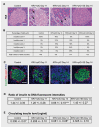Salicylate prevents virus-induced type 1 diabetes in the BBDR rat
- PMID: 24147110
- PMCID: PMC3797740
- DOI: 10.1371/journal.pone.0078050
Salicylate prevents virus-induced type 1 diabetes in the BBDR rat
Abstract
Epidemiologic and clinical evidence suggests that virus infection plays an important role in human type 1 diabetes pathogenesis. We used the virus-inducible BioBreeding Diabetes Resistant (BBDR) rat to investigate the ability of sodium salicylate, a non-steroidal anti-inflammatory drug (NSAID), to modulate development of type 1 diabetes. BBDR rats treated with Kilham rat virus (KRV) and polyinosinic:polycytidylic acid (pIC, a TLR3 agonist) develop diabetes at nearly 100% incidence by ~2 weeks. We found distinct temporal profiles of the proinflammatory serum cytokines, IL-1β, IL-6, IFN-γ, IL-12, and haptoglobin (an acute phase protein) in KRV+pIC treated rats. Significant elevations of IL-1β and IL-12, coupled with sustained elevations of haptoglobin, were specific to KRV+pIC and not found in rats co-treated with pIC and H1, a non-diabetogenic virus. Salicylate administered concurrently with KRV+pIC inhibited the elevations in IL-1β, IL-6, IFN-γ and haptoglobin almost completely, and reduced IL-12 levels significantly. Salicylate prevented diabetes in a dose-dependent manner, and diabetes-free animals had no evidence of insulitis. Our data support an important role for innate immunity in virus-induced type 1 diabetes pathogenesis. The ability of salicylate to prevent diabetes in this robust animal model demonstrates its potential use to prevent or attenuate human autoimmune diabetes.
Conflict of interest statement
Figures




References
Publication types
MeSH terms
Substances
Grants and funding
LinkOut - more resources
Full Text Sources
Other Literature Sources
Medical

